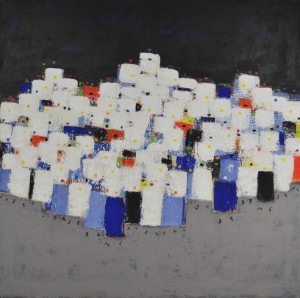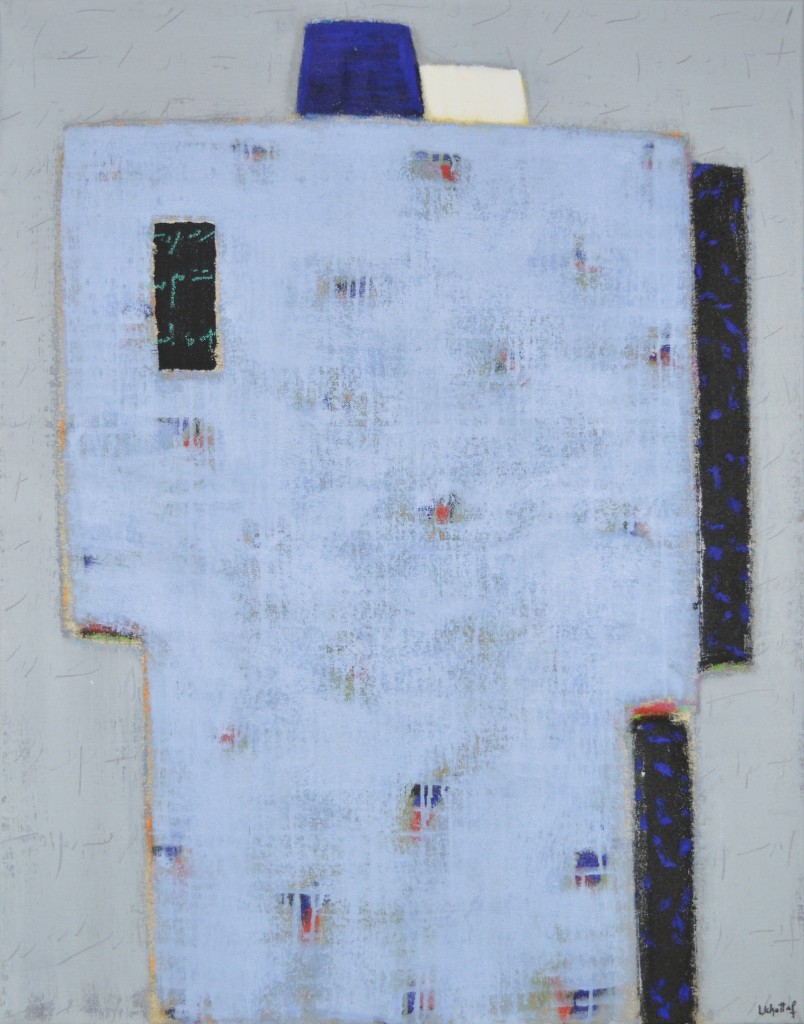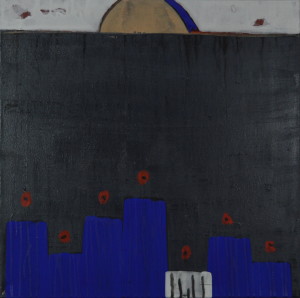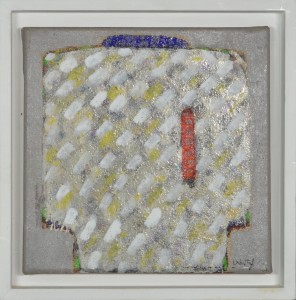
Aziz Lkhattaf
In 2013 I wrote the following article on his work:
MEANINGFUL EMPTINESS
More than twenty packages seem to stare at me accusingly. They are reluctant to be stripped of their substantial, professional wrappings. Gradually an oeuvre is unveiled the like of which I have never seen before. It is striking and unexpected. Simultaneously evoking all sorts of references. Is the last one, the biggest work, typical? When I look at the huge painting by Aziz Lkhattaf (1968, Ourir, Marrakesh), it is like seeing a deconstructed Kiefer, a work by the German artist with all the objects, representations, bombast and melodramatics removed, a Kiefer reduced to the abstracted minimum. Sand colors are thickly applied to the canvas. They are mixed with bits of straw and grains of sand. I think. Here and there on this enormous field, ‘shapes’ are placed. Painted in different colors. Lots of (off) white with a blob of red and a spot of black. They are almost literally placed on top. Resembling human figures. Specks in the distance. Are they Arabian men or actually women? Going where? The whole thing radiates an immense tranquility. A minimal poem saying more in white than words? Or are they fragments of memories, childhood memories – their precision involuntarily lost in time with only a concept of their ambience remaining?
Before he started his own gallery Aziz Lkhattaf was for many years in charge of a gallery in Tangier that forms part of the Institut Français. Here he came to know the work of many artists. Here he gradually developed his own style. In particular the work of his fellow-countrymen Khalil El Ghrib (1948) and Mohamed Hamri (1932-2000) made a great impression on him. El Ghrib is a sculptor whose work includes minimal wall sculptures, a sort of clay tablet on which a few apparently random lines or scratches have been made. An artist who is averse to the art market and refuses to take part in it. Hamri is famous both in and outside Morocco, not least because he was part of the so-called ‘beat scene’, a group of writers, musicians and artists around the controversial American author Paul Bowles. He painted his surroundings in a naïve, and yet suggestive manner. In many works the figuration shifts into abstract forms, executed in subdued colors. As if the shimmering sun has neutralized the contrasts. As well as Hamri, Lkhattaf also gives Matisse and Bonnard as examples. It is chiefly the simplicity of the former that fascinates him, the simplicity found for example in ‘La Dance’ (1910) and in his cutout shapes on paper (such as ‘Nu Bleu’ from 1952). While it is Bonnard’s vividly painted landscapes that especially stick in his memory.
Aziz Lkhattaf produces paintings in all sizes. From 30 X 30 cm to 200 X 200 cm. Also in landscape or portrait dimensions. The small paintings include a series of ‘portraits’. Human figures reduced to rectangular fields executed in various subdued colors. The heads are faceless, the bodies lack any detail. Anonymous figures. Even the gender is ambiguous. Do they stem from a religious Arab tradition that forbids the portrayal of people? Or are they portraits of people who do not wish to give any sort of opinion or submit to any sort of interpretation?
Aziz Lkhattaf’s work has seldom before been seen in the Netherlands. It is known since it has been shown many times in North Africa. The artist has had a couple of exhibitions in Paris and his work was in one group show in New York. Nevertheless it is as if our most famous material painter Jaap Wagemaker (1906-1972) is talking about his work: “The forms are often very strong and I love these simple colors, sand colors, red and black. People talk of primitive art, but I hate the word. A magical power and an even greater wisdom are to be found in this art (…).”
Rob Perrée
Amsterdam, January 2013.




